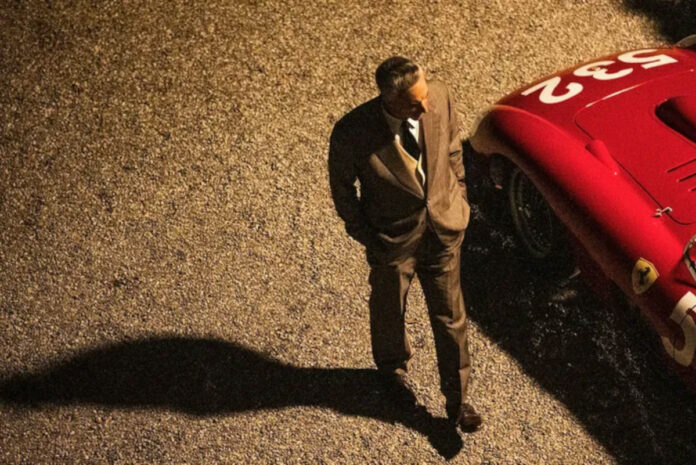Adam Driver’s
Key points
- Adam Driver gave a blunt response to an audience member who criticized the crash scenes in his new film, Ferrari.
- Driver is passionate about the film and has put a lot of work into it, both as an actor and as an executive producer.
- The question was phrased in a way that was somewhat dismissive of the film, and Driver’s response could be interpreted as a way of defending the film and the people who worked on it.
- It’s also possible that Driver was simply tired of answering questions about the crash scenes.
- Ultimately, whether or not Driver’s response was justified is a matter of opinion.
Ferrari
It sounds like Adam Driver’s reaction to the question about the crash scenes in “Ferrari” during the Q&A session at Poland’s Camerimage Film Festival was quite blunt and unexpected, especially considering his significant investment in the film as both a leading actor and an executive producer. His response, while abrupt, highlights a common challenge actors face when confronted with critiques about aspects of a film that are outside their control, such as special effects or stunt work.
Given the context of the film, which revolves around a pivotal and challenging period in Enzo Ferrari’s life, it’s understandable that Driver, embodying the role of Ferrari, would be deeply connected to the project. His portrayal of such a complex character in a high-stakes narrative, combined with the film’s prior recognition, such as the nomination for a Golden Lion and the positive reception at the Venice Film Festival, might have contributed to his surprise and subsequent blunt response to the criticism.
Authentic Reaction
The incident you described also raises interesting points about actor responsibility and public perception. Actors often become the face of a film and are expected to field questions about all aspects of production, even those they don’t directly influence. Driver’s reaction could be seen as a defence of the film’s overall quality or a sign of his passion for the project.

Key Analysis
Certainly! Analyzing the situation involving Adam Driver’s response to a question about the crash scenes in his film “Ferrari,” several key points emerge:
- Actor’s Responsibility vs. Control: This incident underscores the dichotomy between an actor’s public face and their actual control over a film’s production. As an actor, Driver is the visible representative of the film but isn’t responsible for elements like special effects or stunt choreography. His reaction highlights the challenge actors face when confronted with critiques that target aspects of a film beyond their purview.
- Emotional Investment in the Role: Driver’s significant investment in “Ferrari,” both as an actor and an executive producer, may have intensified his connection to the film. Portraying a complex character like Enzo Ferrari during a tumultuous period could lead to a deep personal association with the project, potentially influencing his response to perceived criticism.
- Expectations and Public Perception: Coming off a highly positive reception at the Venice Film Festival, Driver’s reaction might also reflect a contrast between his expectations based on prior accolades and the nature of the question posed. This situation highlights how actors, especially those involved in critically acclaimed projects, can be caught off guard by negative feedback.
- Reflection of Character: Driver’s blunt response can be seen as somewhat reflective of the character of Enzo Ferrari himself, known for being forthright and passionate. This parallel might suggest a deeper immersion in the role, where the actor’s and character’s responses align.
- Audience’s Role in Film Reception: The incident points to the subjective nature of film criticism and reception. While the questioner described the crash scenes as “cheesy,” this is a subjective assessment. The film’s wider release will allow for a more comprehensive judgment from the audience and critics, providing a broader context for evaluating Driver’s reaction.
- Public Handling of Criticism: This situation also serves as a case study in how public figures handle criticism in a live setting. Driver’s response, while candid, highlights the challenges faced by celebrities in navigating public scrutiny and responding to criticism in a measured way.
Adam Driver’s response to the question about the crash scenes in “Ferrari” is a complex interplay of an actor’s emotional investment, public perception, the boundaries of an actor’s influence in film production, and the subjective nature of film criticism.
Public Perception with Actor Influence
Analyzing the situation involving Adam Driver’s blunt response to a critique about the crash scenes in “Ferrari,” we can identify several pros and cons:
Pros:
- Authenticity: The driver’s response was genuine and unfiltered, reflecting a sense of authenticity that audiences often appreciate in celebrities. This candour can enhance his image as a passionate and sincere artist.
- Defending Artistic Work: His reaction can be seen as a defence of the film’s production quality, showing his commitment to the project and respect for the work of his colleagues who were responsible for those aspects of the film.
- Highlighting Actor’s Limited Control: This incident sheds light on the fact that actors are often expected to answer for elements of a film that are beyond their control, thereby educating the audience about the collaborative nature of filmmaking.
Cons:
- Public Perception: The abrupt nature of Driver’s response might be perceived as unprofessional or disrespectful, potentially impacting his public image negatively. It could be seen as a lack of tolerance for criticism.
- Missed Opportunity for Constructive Engagement: The Q&A session was an opportunity to engage thoughtfully with the audience’s perceptions and offer insights into the filmmaking process. The response given bypassed this opportunity.
- Alienating Audiences: Such a blunt response might alienate certain segments of the audience, particularly those who might share the questioner’s opinion about the crash scenes.
- Overshadowing the Film’s Merits: This incident, particularly in the media, might overshadow other aspects of the film, such as its storytelling, cinematography, or historical significance, focusing attention on a single contentious element.
- Risk of Misinterpretation: Without context, the Driver’s response might be misinterpreted as a general disregard for audience feedback, even though it might have been a spontaneous, emotion-driven reaction specific to that moment.
Conclusion
While Adam Driver’s response was authentic and underscored important points about an actor’s role in film production, it also carried risks in terms of public perception and missed opportunities for constructive dialogue about the film.
Ultimately, the audience’s reception of the film, especially the controversial crash scenes, after its release will provide a broader perspective on whether Driver’s response was justified. The varied opinions of viewers and critics alike will contribute to the ongoing conversation about the film’s artistic and technical merits.





































